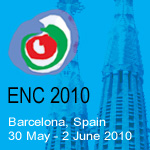|
|


NUCNET NEWS
THE WORLD’S NUCLEAR NEWS AGENCY
Chernobyl Waste Centre Handed Over As Information Campaign Launched
27 Apr (NucNet): A turnkey waste treatment centre for solid radioactive waste has been formally handed over at the site of the former Chernobyl nuclear power plant.
Germany’s Nukem Technologies said the centre, or ‘industrial complex for radwaste management’ (ICSRM), was formally handed over to Nukem’s customer, the Chernobyl Nuclear Power Plant, on 24 April 2009.
The facility is needed for the conditioning of radioactive waste that was generated during the plant’s operation as well as during the decommissioning of units one to three.
Most of the finance for the project was from the European Commission’s TACIS (Technical Aid to the Commonwealth of Independent States) programme, with additional funding from the Ukrainian government.
Nukem said: “Treatment of the waste represents a significant contribution to improving the environmental situation in Chernobyl.” Nukem said the project also provided a boost to the local economy because a major portion of the work, including the supply of miscellaneous components and construction and installation work, was contracted out to Ukrainian companies.
Towards the end of 2007, Nukem handed over an ‘engineered near surface disposal facility’ where short-lived radioactive waste accumulated at the nuclear plant is stored after initial conditioning. The repository is 17 kilometres (km) from the Chernobyl plant site at the Vektor radioactive waste recycling complex.
Yesterday was the 23rd anniversary of the 1986 accident at Chernobyl. The International Atomic Energy Agency (IAEA) said today that its Department of Technical Cooperation is investing 350,000 euro (EUR) (about 460,000 US dollars) over three years in the International Chernobyl Research and Information Network (ICRIN).
The IAEA is one of four UN agencies contributing to the programme, costing about EUR 2 million, which is designed to meet the information needs of affected communities in Belarus, the Russian Federation, and Ukraine.
“The vast majority of people living nearby face no direct or serious threat to their health from radiation,” the IAEA said. “People living in affected communities continue to face stigma and fear. This communication campaign will seek to address those issues.”
Details of ICRIN are on the agency’s website (http://www.iaea.org).
|
E.ON Considers Replacement Unit For Sweden’s Oskarshamn Plant
23 Apr (NucNet): The Swedish arm of Germany’s E.ON utility is considering proposals to build a replacement reactor unit at the Oskarshamn nuclear power plant on Sweden’s east coast.
The chief executive officer of E.ON Sweden Per Lindell said the company is considering the possibility of replacing the Oskarshamn-1 reactor unit.
Mr Lindell made the announcement during a visit to the plant on 21 April 2009. He added that it might be possible to submit an application to build the replacement unit after September 2010, following parliamentary elections.
The application would seek permission to replace the 467-megawatt boiling water reactor with a unit of up to four times the installed electric generating capacity. The estimated cost of the project would be between 4 and 6 billion euro (5 to 8 billion US dollars).
E.ON Sweden is one of Scandinavia's largest energy companies. It is also the parent company of OKG, which operates the three-unit Oskarshamn nuclear power plant. Oskarshamn-1, Sweden’s first commercial reactor unit, was first connected to the grid in August 1971.
Proposals from Sweden’s coalition government, expected to be ratified by parliament before this summer’s recess, would overturn a national ban and allow new reactor units to be built to replace old units.
|
Access To Nuclear Energy ‘Vital For Global Economy’
20 Apr (NucNet): Clean and affordable energy, including access to safe and secure nuclear power, should be a central element of efforts for a sustainable global economy and the future of the planet, Organisation for Economic Co-operation and Development (OECD) secretary-general Angel Gurria has said at a ministerial conference in China.
“Nuclear energy has the potential to meet a significant part of future demand while reducing tensions on hydrocarbon markets and alleviating the risk of global climate change,” said Mr Gurria in his keynote speech to the International Ministerial Conference on Nuclear Energy in the 21st Century, which opened today in Beijing.
“The necessary uranium resources are available to fuel this expansion, mechanisms are in place to ensure safety, and radioactive waste management solutions exist and are beginning to take form in several OECD/Nuclear Energy Agency (NEA) countries,” he said.
According to NEA director-general Luis Echavarri and the latest figures in the NEA’s Nuclear Energy Outlook, nuclear energy capacity is set to increase by between 55% and as much as 375% between now and the middle of the century.
To achieve this increase, a growing number of reactors will need to be built from now until 2030, followed by an average of 23 to 54 1,000-megawatt reactors per year between 2030 and 2050. These construction rates are fully compatible with the historical building experience of the 1970s and 1980s, the NEA said.
The International Ministerial Conference on Nuclear Energy in the 21st Century, organised by the International Atomic Energy Agency and co-sponsored by the OECD Nuclear Energy Agency, is being hosted by the Chinese government in Beijing from 20-22 April 2009.
|
|
| |
|





